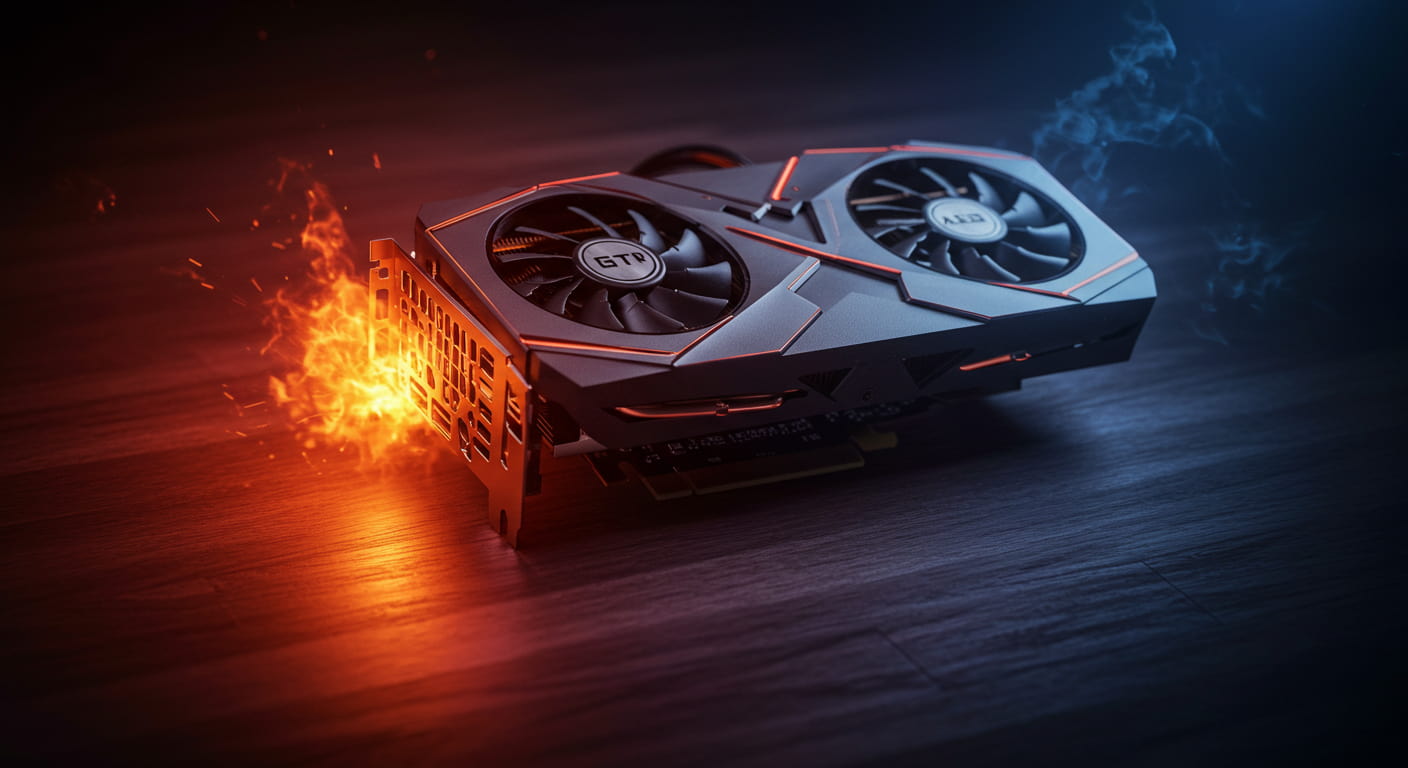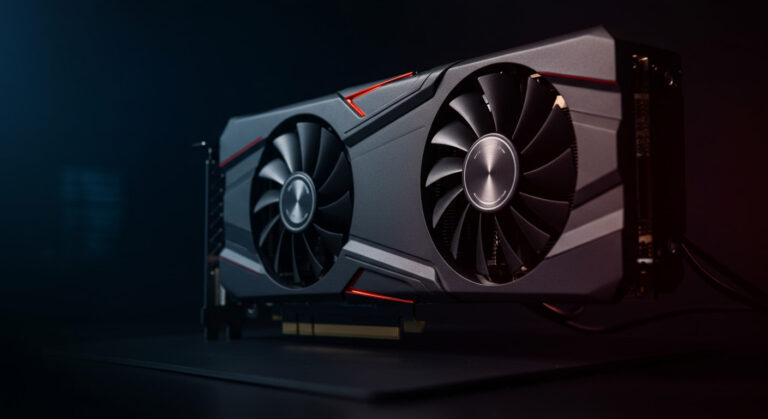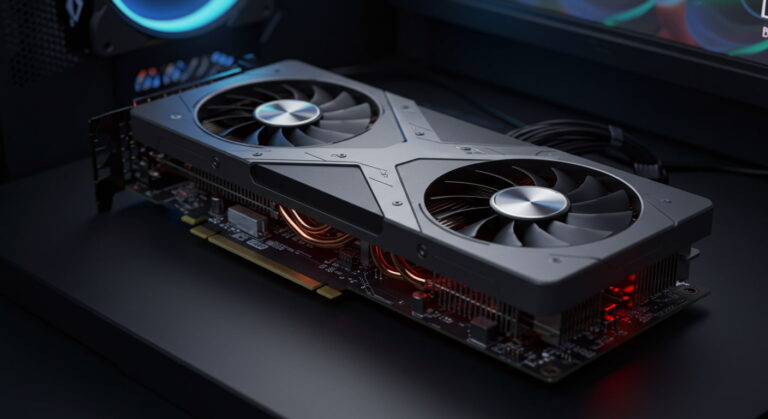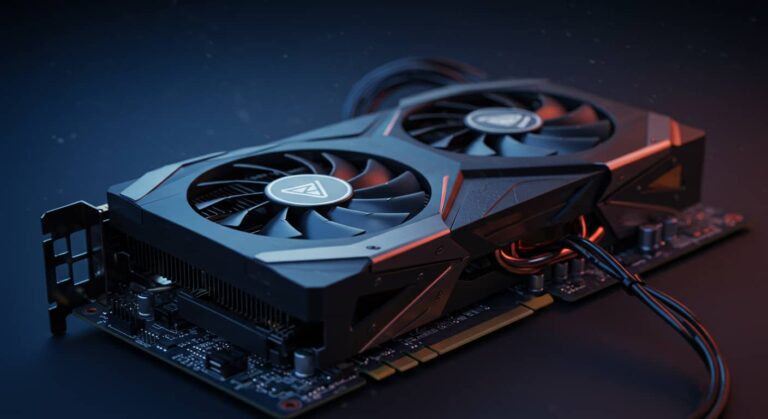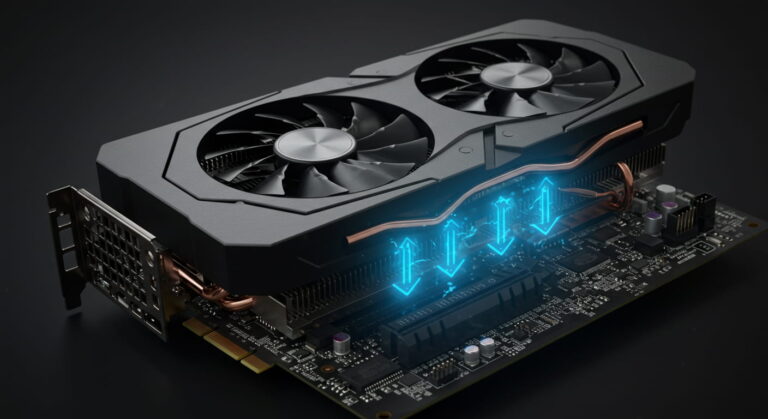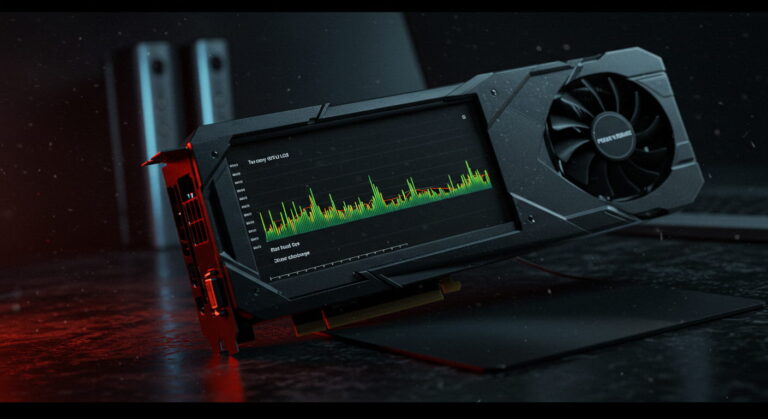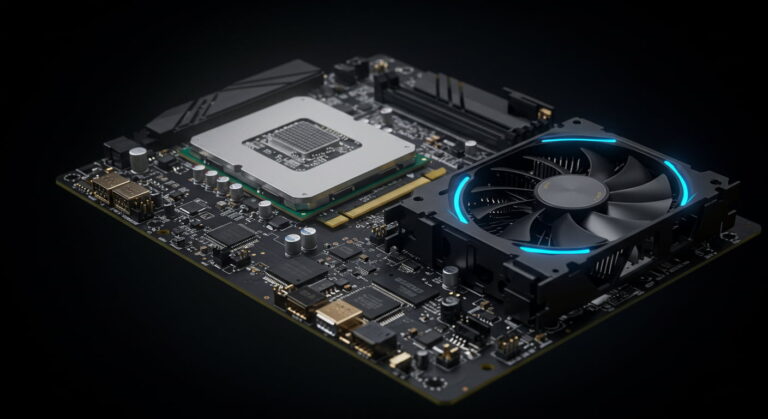Max Temp for GPU: Complete Guide to Safe GPU Temperatures in 2025!
Graphics cards (GPUs) are one of the most important components inside a computer, especially for gaming, video editing, 3D rendering, and AI workloads. But with great performance comes high power usage and heat output. If your GPU runs hotter than it should, it can cause performance drops, crashes, or even permanent hardware damage. That’s why knowing the max temp for GPU in different conditions is essential.
This guide explains everything about safe GPU temperatures, maximum temperature limits for popular models like the RTX 3060 and GTX 4060, gaming vs idle temps, laptop vs desktop differences, and tips to prevent overheating.
What’s the max temperature my GPU should hit on my PC?
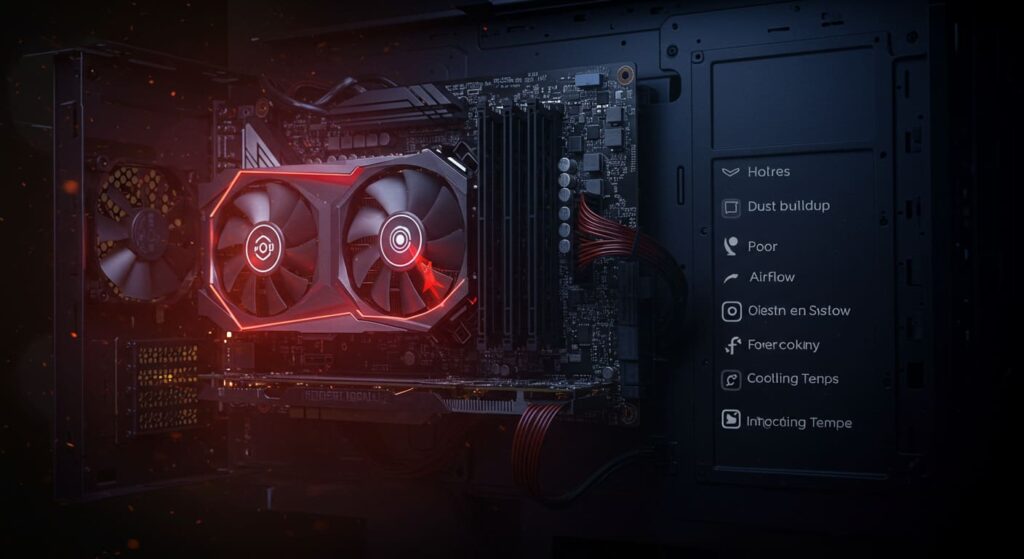
Factors that affect the max temp for GPU
The maximum temperature a GPU can reach depends on multiple factors such as the GPU model, cooling system, case airflow, and even the room temperature. High-end GPUs are designed to handle temperatures up to 80–85 °C under load, but that doesn’t mean they should constantly run at those levels.
Dust buildup, poor airflow, overclocking, and inefficient cooling fans can also cause higher temps. Each of these factors directly influences how hot your GPU will get while running games or heavy software.
Manufacturer vs real-world temperature limits
GPU manufacturers like NVIDIA and AMD set official thermal limits for each graphics card. For most modern GPUs, the maximum safe operating temperature ranges between 83 °C and 95 °C. However, in real-world use, it’s recommended to keep your GPU below 80 °C for long-term stability and performance.
Running a GPU consistently at the upper end of its thermal limit may not damage it instantly but can shorten its lifespan over time.
Why monitoring GPU temps matters
Monitoring GPU temperatures helps prevent overheating, system crashes, and throttling. Tools like MSI Afterburner, HWMonitor, or GPU-Z allow you to keep track of your GPU’s max temp in real time. Keeping an eye on temperatures ensures you catch problems before they cause hardware failure.
Also read: How Hot Should My GPU Be?
What temperature is too hot for a GPU?
General safe range for GPU temperatures
Most GPUs are designed to operate safely within 30 °C to 85 °C. Anything below 30 °C usually means the system is idle, while 65 °C to 80 °C is normal during gaming or rendering.
Signs your GPU is overheating
Your GPU might be running too hot if you notice:
- Sudden FPS drops or stuttering in games
- Fan noise getting unusually loud
- System crashes or restarts
- Visual artifacts such as flickering or colored lines
These signs often appear once the GPU goes beyond 85–90 °C.
Long-term effects of running at high temps
Constantly running your GPU at its thermal limit may lead to:
- Faster thermal degradation of components
- VRAM overheating, which affects performance
- Reduced GPU lifespan
- Increased chance of permanent damage
What is the max GPU temp for RTX 3060?
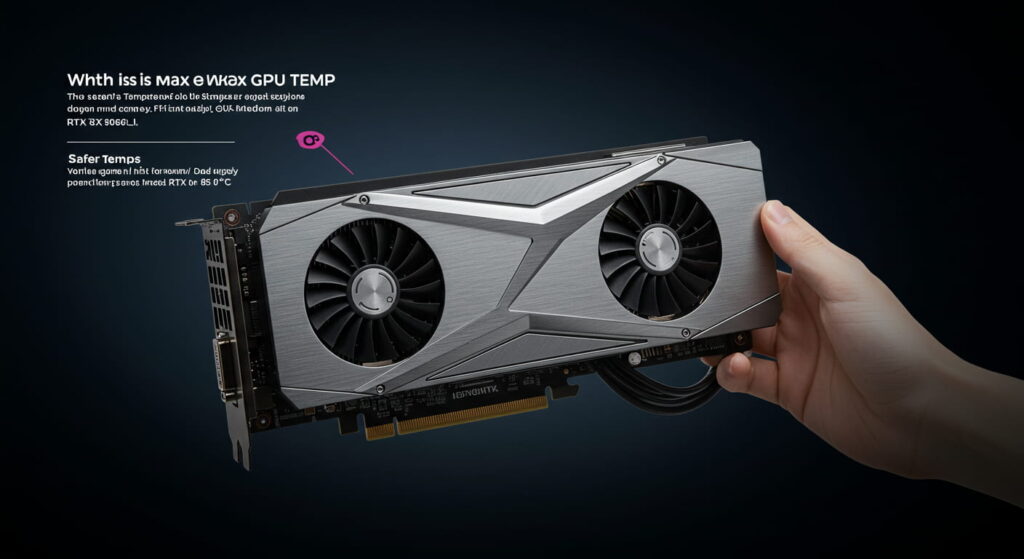
Nvidia’s official temperature limit
The NVIDIA RTX 3060 has a maximum GPU temperature limit of around 93 °C, according to manufacturer specifications. However, it’s strongly recommended to keep it below 80 °C for consistent performance.
Safe temps while gaming on RTX 3060
While gaming, an RTX 3060 typically runs between 65 °C and 78 °C. If the card goes beyond 80 °C regularly, it may indicate poor airflow or dust buildup inside your PC case.
Best practices for keeping RTX 3060 cool
- Ensure your PC case has at least two intake and one exhaust fan.
- Use high-quality thermal paste when needed.
- Avoid overclocking if your cooling is limited.
- Keep your system clean from dust with regular maintenance.
What is the temperature limit for GTX 4060?
Normal operating temps of GTX 4060
The NVIDIA GTX 4060 typically operates within 35 °C at idle and 70–78 °C under load. This range is perfectly safe for everyday gaming and creative work.
Max safe load temperatures
The GTX 4060 has a maximum temperature limit of around 90 °C. Exceeding this point may cause thermal throttling or system shutdowns.
Cooling solutions for GTX 4060
- Use a larger heatsink GPU model for better cooling.
- Improve airflow by arranging cables neatly inside the case.
- Consider aftermarket GPU coolers or liquid cooling for overclocked setups.
Also read: How Much GPU Usage Is Normal?
What is the max temp for GPU while gaming?
Typical gaming workloads and temps
During gaming, GPUs run close to their maximum power draw, which naturally increases temperature. Average gaming temps are:
- 60–75 °C for mid-range GPUs
- 70–85 °C for high-end GPUs
Acceptable gaming temp ranges
If your GPU stays under 80 °C while gaming, it’s considered safe. Some models can handle up to 85 °C, but anything beyond that can lead to performance drops.
How to reduce GPU temps during long sessions
- Enable FPS limits in games to reduce unnecessary load.
- Turn on V-Sync or DLSS/FSR for better efficiency.
- Use an elevated laptop stand or open PC case panels for extra airflow.
What is the max temp for GPU while idle?
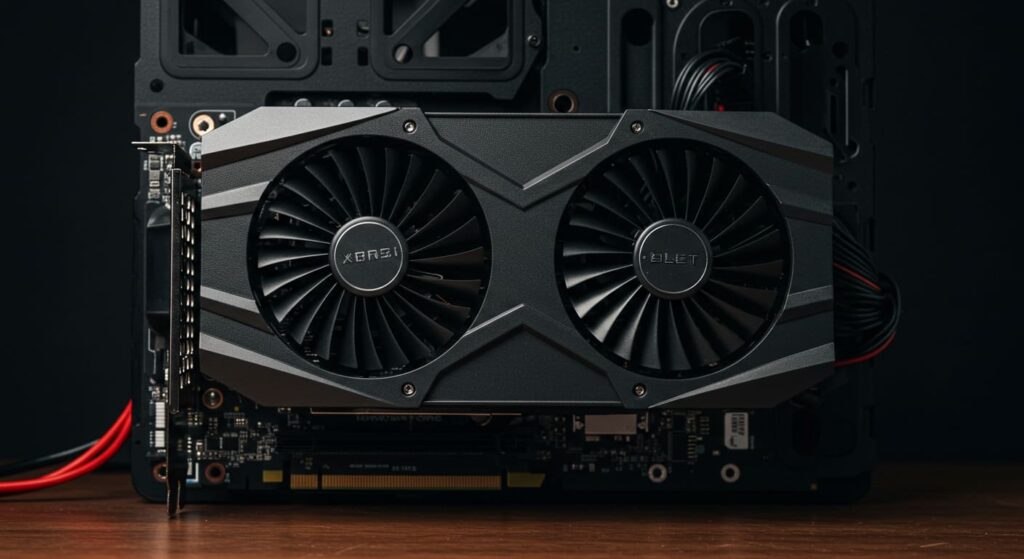
Normal idle temperatures explained
When not under load, a GPU should stay between 30 °C and 45 °C. This shows that the cooling system is functioning properly.
Why high idle temps can be a problem
If your GPU is above 55 °C at idle, it could be due to:
- Background programs using GPU resources
- Poor airflow in the case
- High ambient room temperature
- Dust blocking fans or heatsinks
Fixes for abnormal idle GPU temps
- Close unnecessary apps running in the background
- Reapply thermal paste if it has dried out
- Clean the GPU fans and case interior
- Update GPU drivers to fix software-related issues
Also read: How Hot is Too Hot for a GPU?
What is the max temp for GPU laptop vs desktop?
Differences in laptop vs desktop cooling
Laptops have limited cooling capacity compared to desktops, so they often run hotter. While desktop GPUs typically max out at 80–85 °C, laptop GPUs can safely reach 90–95 °C under load.
Typical max temps for gaming laptops
Most gaming laptops are designed to handle temps around 85–90 °C. This is higher than desktops but still within safe limits.
How to manage laptop GPU temps effectively
- Use a laptop cooling pad
- Keep the laptop on a hard surface, not a bed or blanket
- Regularly clean vents and fans
- Lower in-game graphics settings to reduce GPU load
How Hot is Too Hot for GPU? Check Your GPU Temperature
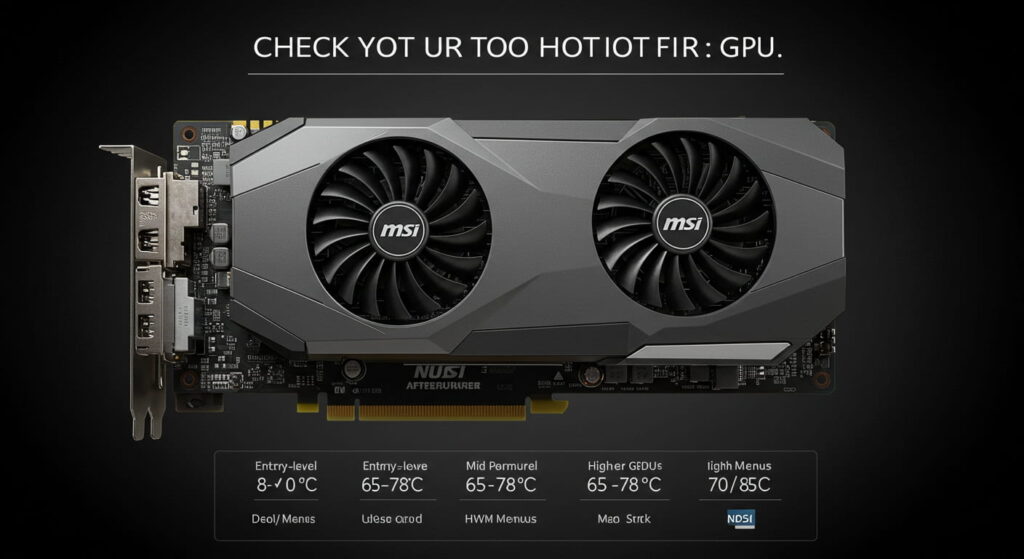
Tools to monitor GPU temps
- MSI Afterburner (Windows)
- HWMonitor (Windows)
- iStat Menus (Mac)
- NVIDIA GeForce Experience Overlay
Ideal temp benchmarks for different GPUs
- Entry-level GPUs: 60–70 °C under load
- Mid-range GPUs: 65–78 °C under load
- High-end GPUs: 70–85 °C under load
Warning signs your GPU temp is unsafe
If you notice temps hitting 90 °C or above, your system may:
- Throttle performance
- Shut down unexpectedly
- Produce loud fan noise
- Show graphical glitches
What is the max temp for GPU before thermal throttling?
What thermal throttling means
Thermal throttling is when a GPU reduces its clock speed automatically to prevent overheating. This helps protect the hardware but reduces performance.
Throttling points for modern GPUs
Most GPUs start throttling around 85–90 °C. Once they hit the maximum thermal limit (often 93–95 °C), they cut performance drastically to cool down.
Preventing GPU performance loss
- Improve airflow with extra case fans
- Use custom fan curves in MSI Afterburner
- Apply undervolting to reduce heat without losing much performance
Also read: CPU GPU Compatibility
What is the safe max temp for GPU in Celsius and Fahrenheit?
Conversion between °C and °F
- 70 °C = 158 °F
- 80 °C = 176 °F
- 90 °C = 194 °F
Why both units matter for users
Different regions use different units. Knowing both Celsius and Fahrenheit ensures you understand your GPU’s safe operating temps regardless of software settings.
Recommended safe operating ranges
- Idle: 30–45 °C (86–113 °F)
- Gaming: 65–80 °C (149–176 °F)
- Max safe: 85 °C (185 °F)
- Absolute max (not recommended): 90–95 °C (194–203 °F)
FAQs About Max Temp for GPU
1. What is the safe max temp for GPU while gaming?
Most GPUs stay safe up to 80 °C while gaming. The recommended safe max temp for GPU is between 65 °C and 80 °C for long gaming sessions.
2. Is 90 °C considered the max temp for GPU?
Yes, 90 °C is close to the max temp for GPU, but it is not ideal. Running your GPU at this level for long periods may cause thermal throttling.
3. What is the max temp for GPU while idle?
The max temp for GPU at idle should not go above 45 °C. If idle temps are higher, it may indicate poor airflow or background processes.
4. Does the max temp for GPU differ for laptops and desktops?
Yes. In laptops, the max temp for GPU can reach up to 90–95 °C due to compact cooling, while in desktops, it is safer to stay below 85 °C.
5. What happens if my GPU crosses the max temp for GPU?
If your GPU goes beyond the max temp for GPU, it may throttle performance, crash games, or even shut down the system to protect itself.
6. What is the max temp for GPU RTX 3060?
The official max temp for GPU RTX 3060 is around 93 °C, but for safe usage, keep it under 80 °C while gaming.
7. What is the max temp for GPU GTX 4060?
The max temp for GPU GTX 4060 is close to 90 °C, but the recommended safe operating range is between 65 °C and 78 °C during gaming.
8. Can thermal throttling lower the max temp for GPU automatically?
Yes. When the GPU overheats, it automatically reduces performance to stay under the max temp for GPU and prevent damage.
9. How can I reduce the max temp for GPU in my PC?
You can lower the max temp for GPU by cleaning dust, improving airflow, applying new thermal paste, or using better cooling solutions.
10. Is it okay if my GPU runs near the max temp for GPU daily?
No, it’s not recommended. Running near the max temp for GPU every day can shorten its lifespan. Try to keep it at least 5–10 °C lower than the maximum limit.
Conclusion:
Understanding the max temp for GPU is crucial for maintaining performance, preventing hardware damage, and ensuring a longer lifespan for your graphics card. While modern GPUs are built to handle high temperatures, keeping them below 80 °C during gaming and 45 °C while idle is the safest approach.
By monitoring temps, improving airflow, and using proper cooling solutions, you can keep your GPU running smoothly in 2025 and beyond.
Related post:
